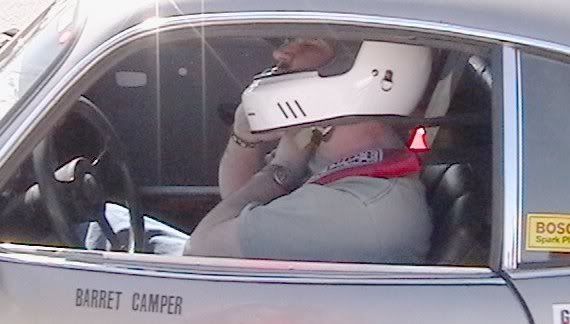
Going Autocross Racing on the Cheap for the Beginner
Air-cooled VW's run in all kinds of motorsports, drag racing, offroad racing, circle track, even road racing Formula Vee. All of these classes costs money, but there is one motorsport you can enter even with a stock car -- the autocross. It is safe, fun, and as competitive as any racing in the world.
Cars are divided into classes where performance should be roughly equal. Typically, a course is laid out marked with traffic cones, and cars are released one at a time to run the course as fast as possible, without hitting any cones. Autocross speeds are never very high, 75mph would be fast, and 40mph is more common. But speed is relative. It's like doing 40mph through the rooms of your house.
Lowest time per class wins, hitting pylons adds a time penalty, and there is one glorious overall Fastest Time of Day (all classes combined) to try for.
Autocross events are sponsored by the Sports Car Club of America and other local car clubs in almost every major city in the U.S. about once a month. Entry fees are low, usually $30 or so, and for that, you get a day on the track, making three to five timed runs, flinging your car around the course in the type of driving you only see in movie car chases through city streets.
An absolutely stock car is eligible. You don't even need special tires. Safety rules do require drivers wear helmets. Most clubs have loaner helmets if you don't have your own. At the track, make sure and take everything loose out of the car, including the spare tire and jack. It's obvious you don't want anything flying around in the trunk, but the big advantage is you're making the car lighter. The Lighter the Better.
Actually, starting out driving your car the same way it is set up for the street is very educational. You learn what it will really do when pushed to, and over, the limit. The first speed trick a stocker should use is just higher tire pressures. Street Tire Pressures Do Not Work for a car pushed even moderately. The tires will almost roll right off the rims. Good VW TP's (to start) are 20 to 24psi front and 26 to 28psi rear.
The Bug and Karmann Ghia are great autocross cars. "Quick cars" tend to win autocrosses over "fast cars." The Bug and Ghia are light and responsive. The advantages of the lower Ghia over the higher Bug will not matter until your skills are greater, and you begin to modify your car. But if you're a beginner, forget about speed parts for now. Learn to Drive before you modify the car.
You will never know how good or bad you really are until you race against other people in other cars. One of the first eye-openers in any kind of racing is learning what you thought you knew about types of cars, tires, and speed parts is hype or genuine. Remember the too-true racer’s saying. “When the green flag drops, the bull**** stops.”
You may have had the chance to walk the course before the event, and that helps, but walking it is not like driving it. The thing to keep in mind on your first run of your first event is: "Take it easy, learn the course. Precision first, speed later."
Most new drivers sit on the starting line and suddenly the track looks like a sea of cones, the path through them lost. When the starter signals go, you accellerate into the sea of cones, dodging left and right, tires screaming, and 40mph seems like 100.
At the end of the run, you may have missed some turns altogether and killed cones like a bowling ball crashing through ten pins, but your adrenaline will have your hands shaking and your breath will be short. You'll drive right back to the grid and take your place in line, more prepared, making plans on what to do different, what to do better.



